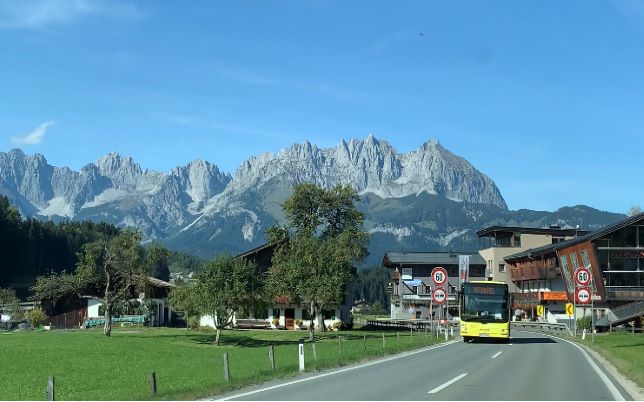

Summary
This blog describes our experience driving in Austria in 2021. Driving in Austria is just like driving in the states where we drive on the right side of the road with speed limits. However there are a few differences that surprised us. Most notable is the abundance of speed cameras throughout the country. Second, interstate-like highways are few. Third is the ever changing highway speed limits. Hopefully, you will find the information helpful.
Speed Cameras and Speed Traps
Speed cameras are either gray metal boxes placed on the side of the road or overhead cameras (see photos below). The metal boxes are predominantly placed in towns while the overhead cameras are on highways. My impression is that those metal boxes are for catching speedsters while those overhead cameras are for catching those that do not have a vignette (more later). Still, we did not know if those overhead cameras pulled double duty so it is best practice to stay at or under the speed limit. Maps.me (see Car Navigation blog) would warn us “camera ahead” most of the time when we were approaching a speed camera.
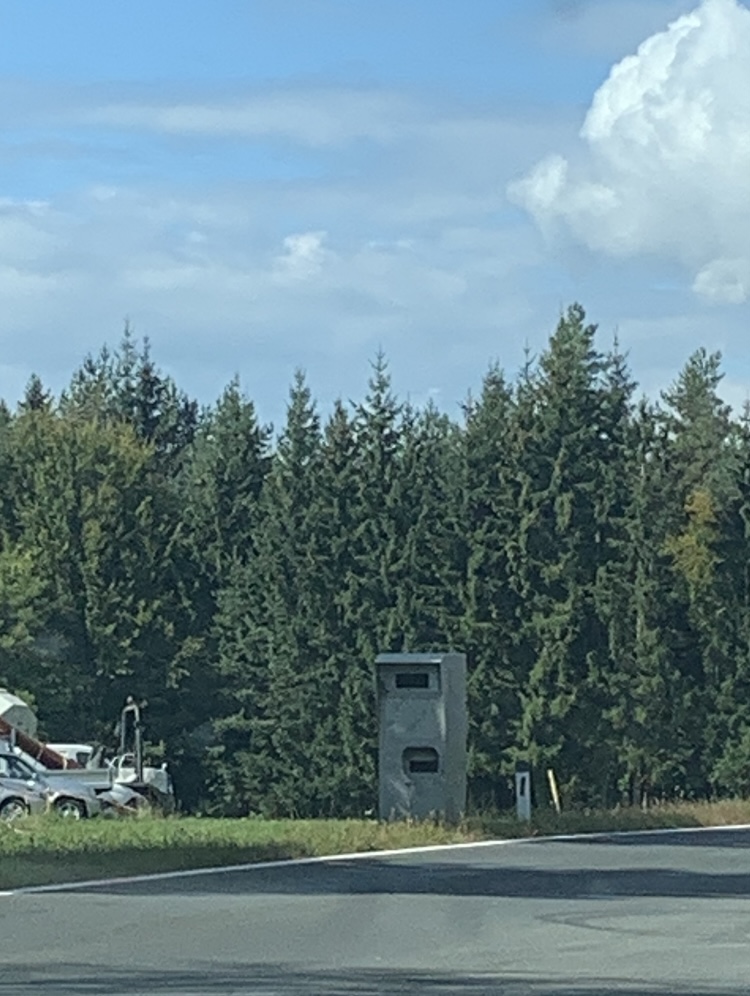

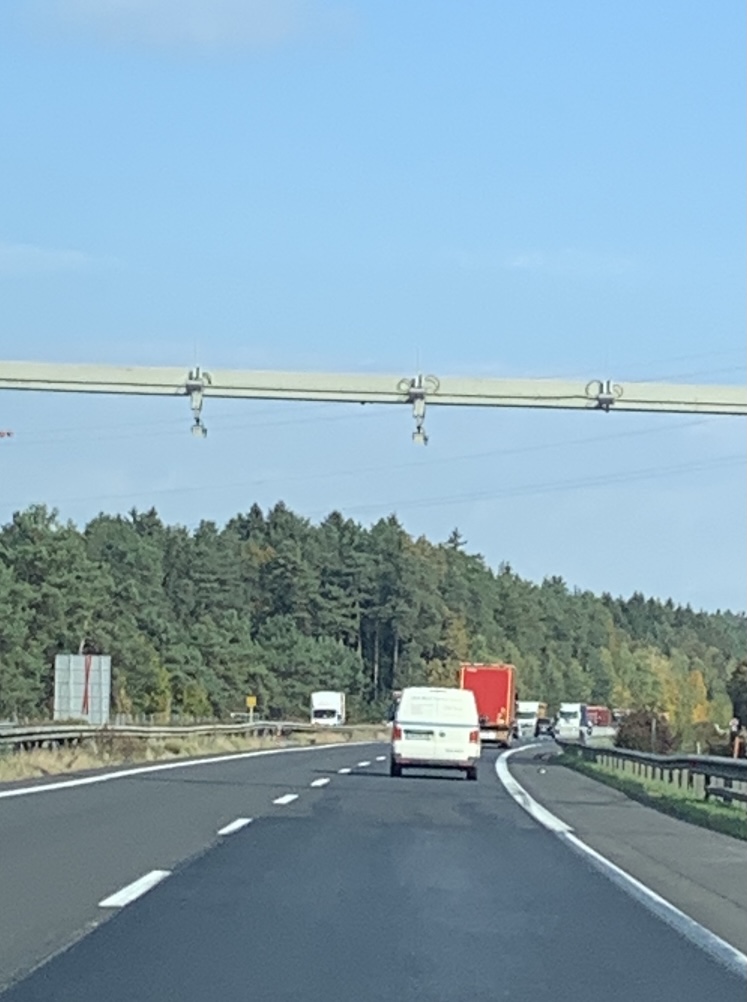

Besides speed cameras, we also saw the occasional duo of policemen on the side of the highway holding a radar gun. They seem to favor the blind spots such as coming off the turn on a highway or on the downhill. So we always had to watch our speed as any car navigation system would not provide any such warning.
Autobahn, Secondary Roads and Vignettes
Austria is slightly smaller than the state of Indiana. Its borders is similar to the shape of Kentucky where it is wider east to west and its eastern half is “taller” than its western half. Most of Austria is mountainous, especially the western 2/3rd of the country. Austria has a network of major highways called autobahns. These autobahns are interstate like highways that allow the driver to drive to a destination the fastest possible way. However, Austrian autobahns have speed limits, unlike the German autobahns.
There are two autobahns that run east to west, one through the northern half that connects with the German autobahn and one in the southern half. There are also two autobahns that run north and south in the central part of the country. We found that these autobahns are labeled “A” on Googlemaps. These highways have at least two lanes in either direction.
If a highway is not labeled “A” on Googlemaps, more than likely it is a single lane undivided highway or what we would call a secondary road. These have one lane in either direction with no median. These roads pass through small towns and villages. We encountered farm machineries on these roads. Driving through these secondary roads reminds me of driving the back roads of Eastern states where the going can be really slow. Of the 50 something days we explored Austria, we probably drove on secondary roads 90 percent of the time.
There was one stretch of secondary road where it took us forever to get through on our way to Erhwald from Innsbruck, close to the border of Germany. The road had to go through Fern Pass which has a gas station, hotel, restaurant and supermarket. It was very slow going through Fern Pass. At times we were stopped for minutes on the road. There was no accident. The road just got heavy use from German drivers as we noticed a lot of license plates having the “D” label (D for Deutsch).
A vignette is basically a pass to drive booth-less toll roads in which the autobahns are one of them. The vignette is a sticker placed on the windshield so that it can be seen by highway cameras. I don’t know what would happen if someone is caught driving on the toll road without a vignette but I imagine it would not be pleasant. There are also toll roads where a vignette is not honored. These highways are called MAUT. A MAUT has booths manned by people who collect the fees. Typically, there will be a sign on the side of the road that warns the driver he or she is about to enter a highway where a vignette is required (see photo below) or if the highway is a MAUT. For highways that require a vignette, we noticed the overhead cameras a few miles after entering the highway.
Our French leased car in 2019 did not come with a vignette. However, both of our Austrian rental cars in 2021 came with a vignette. We make it a habit to always ask the rental agent if the vehicle has the vignette or not instead of assuming it has one.


Speed Limits
Speed limits shouldn’t be a surprise. It is everywhere. When we crossed the border, as we did from Germany to Austria, we saw the speed information board shown in the photo below. What this means is that the speed limit shown on the board applies if there is no posted speed limit where we were driving.
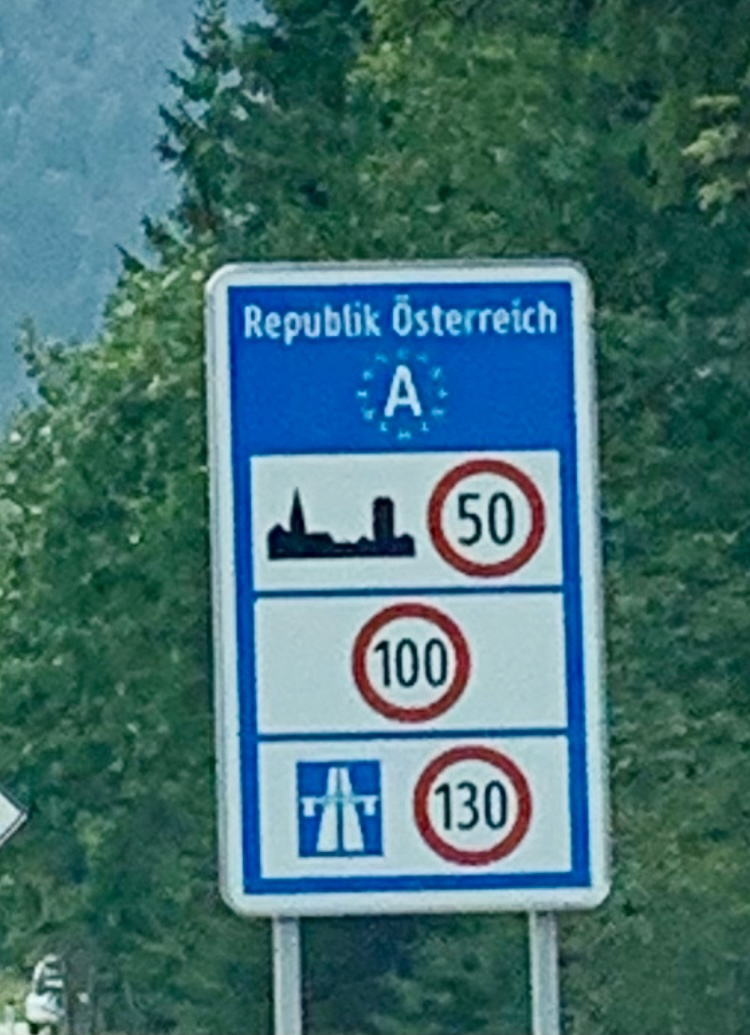

The first one means the speed limit is 50 kilometers per hour (kph) if you are going through towns and villages (some towns and villages would post 30 kph if the streets are really narrow). Each town or village would have a sign with its name to signify that we have entered its boundary. Once we leave the town or village, the speed limit kicks up to 70 kph. Similar to a sign telling us that we are entering the town or village, that same sign with a diagonal line would tell us we are leaving so you can speed up. The last two limits are for multi lane highways. Different sections of multi lane highways have different speed limits. The bottom speed limit applies to highways that require a vignette.
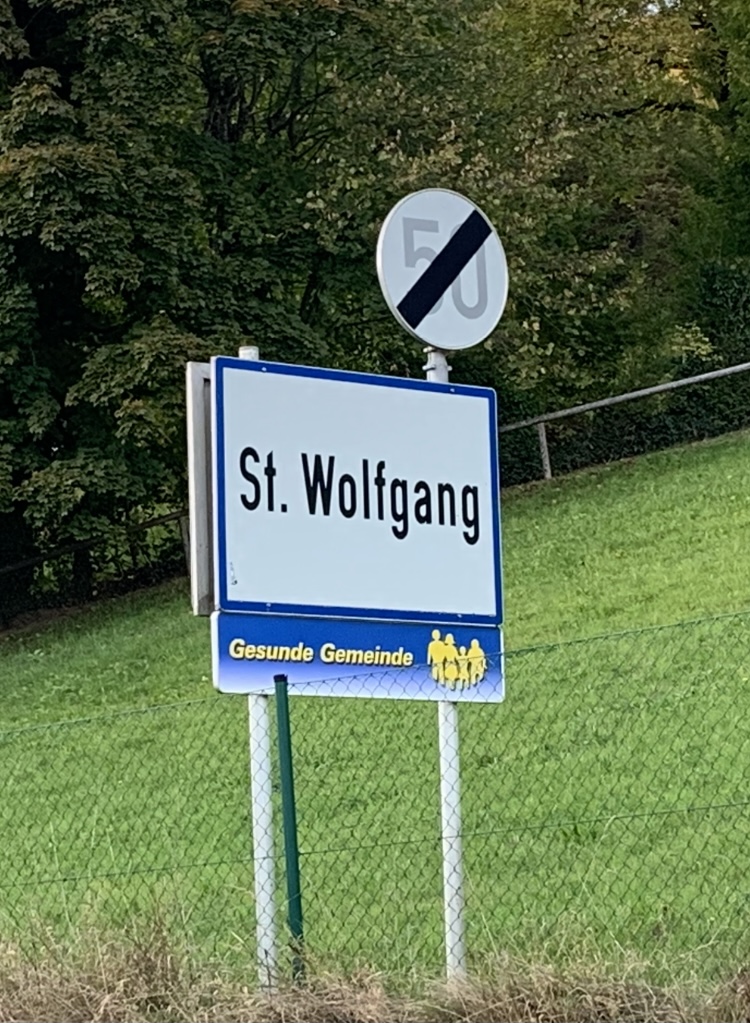

We observed the following common speed limits:
- 50 kph through towns and villages, except if posted otherwise as in the photo above.
- It kicks up to 70 kph sometimes 80 kph when leaving towns and villages.
- Their highways are either 80, 100, 110 or 130 kph, depending on where we were and the highway. More often, it is 80 in tunnels that are undivided single lane or multi lane highways with construction zone. Sometimes it will go down to 60 if there is a shift in lane due to construction. 100 is fairly common in tunnels with 2 lanes of traffic going the same direction. 110 normally appears when we get out of tunnels and are fairly common on two lane highways. 130 are few and normally allowed when there are more than three lanes of traffic going the same direction.
Tailgating
Because we were driving at or under the speed limit most of the time, it seems that we encountered a fair amount of drivers tailgating us while driving in Austria. They were tailgating because they needed to pass us as quickly as possible. This was very common on secondary roads where long straight stretches of roads are few and far in between. So do not be surprised if someone is on your tail closely. They just want to pass.
Final Thoughts
It is the driver’s responsibility to know the speed limits and traffic laws. The information in this blog is for information only, is based on our experience and by no means 100% complete. We made it a point to obey the posted speed limit even if the locals are zooming past us. As we found out, there could be a speed camera or a couple of policemen with a radar gun waiting at the corner.
Related Articles
Car Navigation. Driving in Italy. Driving in Spain. Driving vs Public Transportation, Lease Vs Rent.
